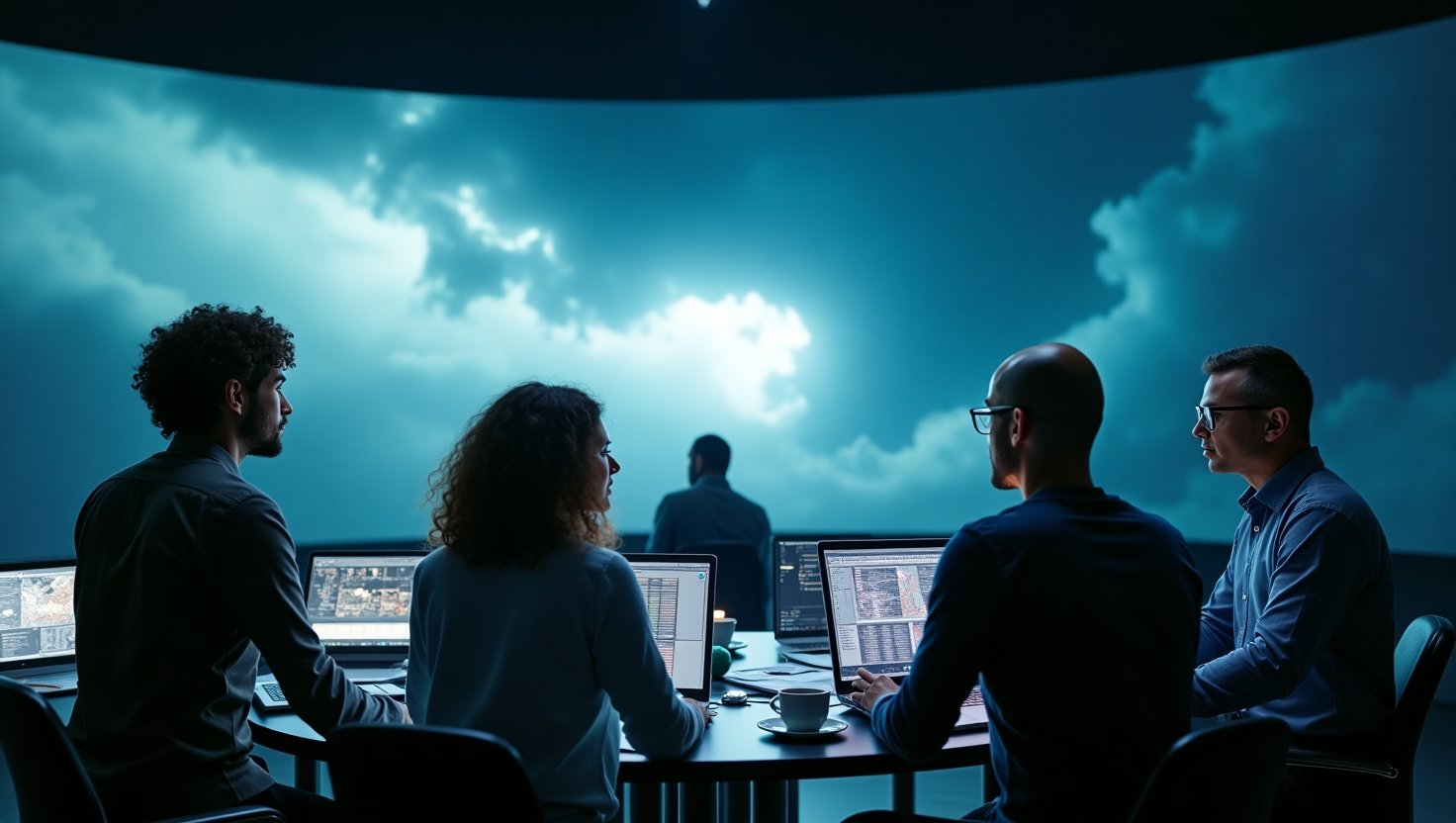The Future of Weather Forecasting: How AI is Transforming the Landscape
Introduction
In a world where the weather can be as unpredictable as a viral meme, AI weather forecasting stands at the crossroads between innovation and necessity. Gone are the days when we solely relied on traditional models to predict whether it would rain on our parade. With the advent of artificial intelligence, the weather forecasting industry is experiencing a seismic shift. But as we scrutinize these technological marvels, it’s crucial to question: is AI the savior we’ve been waiting for, or just another overhyped Silicon Valley fad?
Background
Historically, weather forecasting has been a quintessential science bound by the precision—or lack thereof—of traditional models. These models have been the backbone of meteorological predictions, employing complex mathematical equations that rely on physics-based methodologies. Yet, as Google’s advanced machine learning algorithms buzz with the promise of instantaneous forecasts, one can’t help but wonder if these traditional models are becoming relics of a bygone era.
Companies like Microsoft, Huawei, and Google have entered the fray, each vying to redefine forecast accuracy using AI. Imagine a chess game where AI models play against the traditional weather forecasters. While the traditional models use logical openings grounded in decades of testing, AI boldly tries novel strategies, sometimes failing spectacularly but learning rapidly. But in a world where severe weather caused an estimated $182 billion in damages and 568 fatalities in 2024 alone, accuracy is more than just beneficial—it’s essential (source).
Trend
The current trend in AI weather forecasting shows a technological arms race powered by advanced machine learning. These cutting-edge solutions promise quicker forecasts—a vital edge during unpredictable small-scale events that can result in massive human and economic costs. Google, in particular, boasts AI models that churn out forecasts faster than traditional supercomputers, albeit with mixed results (source).
Yet, we must confront the elephant in the room—speed isn’t everything. While AI can give us a rough sketch of looming weather patterns, can it rival the nuanced artistry of traditional forecasting? The disparity in accuracy, especially with short-term forecasts, still casts a shadow over AI’s lightning-fast predictions, making industry stakeholders wonder whether reliance on AI alone is a dangerous gamble.
Insight
To fully grasp the potential of AI weather forecasting models, one must evaluate the trade-offs. On one hand, AI offers an expediency that traditional models can’t match. On the other, it sometimes plays catch-up when it comes to the intricate detail required for pinpoint accuracy. In a world where a mere miscalculation could equal billions lost or lives endangered, this raises the stakes dramatically.
To put it in perspective, consider the aviation industry—a domain where mistimed or inaccurate forecasts could mean the difference between safest skies or disastrous turbulence. As we weigh AI against its conventional counterparts, it becomes evident that the economic impact of accurate weather forecasts is undeniably significant. For example, data suggests the Met Office could bring £56 billion of benefits to the UK economy over a decade if the forecasts are finely tuned (source).
Forecast
Looking towards the horizon, the future is clear (and yes, we’ve checked the weather). The marriage of AI and traditional models will likely become an industry standard, forging a harmonious relationship that capitalizes on the strengths of each. Imagine a world where your smartphone not only tells you if you need an umbrella today but also dynamically learns and predicts hyper-localized weather patterns, improving reliability over time.
As AI continues to evolve, we can expect even more revolutionary advancements that could redefine consumer expectations and industry standards alike. The precipice of this change urges us to adapt, ensuring we are as prepared for tomorrow’s sunny forecasts as we are for the inevitably cloudy ones.
Call to Action
Engage actively with this technological evolution. Stay informed about the latest developments in AI and weather forecasting to make educated decisions that impact your daily life. This is not a passive observance; it’s a call to arms—a rallying cry to embrace the future, armed with both knowledge and an umbrella, just in case!
For those interested in diving deeper into the topic of AI’s role in transforming weather forecasting, explore related articles and keep an eye out for the next big thing—because the only forecast you can always count on is that the world of weather prediction is in for a stormy, exciting ride.

